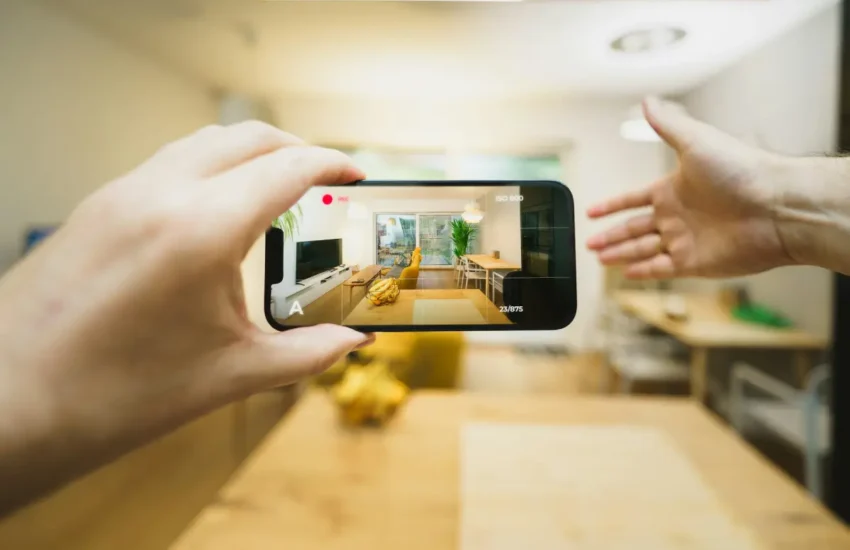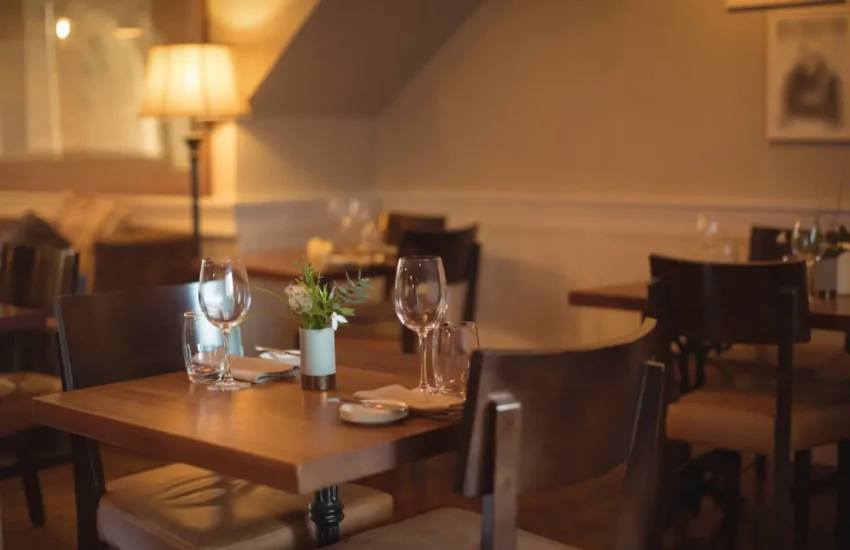Design Trends Shaping Today’s New Construction Homes
New construction homes increasingly reflect current trends through architectural features and room details. Homebuyers crave spaces that deliver both style and functionality, and modern builders respond by blending aesthetics with innovative approaches. The result is a wave of fresh ideas that usher in rooms filled with personality, convenience, and warmth. These shifts go beyond just paint colors or decorative themes; they redefine how homeowners experience their surroundings in a truly dynamic way.
People want homes that adapt to their changing lifestyles. They seek layouts that cater to work and family time, while also allowing for welcoming social gatherings. At the same time, they appreciate quiet corners to let them relish private moments. This balance between openness and seclusion is influencing the next generation of floor plans. Below are a few inspiring directions worth noting for anyone imagining a newly built place to call home.
Seamless Integration of Indoor and Outdoor Spaces
Open-concept design doesn’t stop at the back door anymore. Large sliding glass doors and wraparound windows create a natural transition from living areas to decks and patios, blurring the boundary between what’s indoors and what’s out in the open air.
Outdoor kitchens and al fresco dining spaces are more popular than ever because they expand the livable square footage beyond the walls. Large windows also allow extra sunlight inside, cutting back on energy costs and providing a warm, inviting ambiance. Whether it’s a modest patio or lush garden, homeowners see the value in turning these outdoor areas into true extensions of their indoors.
Biophilic Inspiration
Organic elements have never been more in demand. Natural stone accents, eco-friendly fittings, and live greenery enliven interiors while blending seamlessly with outdoor views. You might notice rustic wood beams paired with sleek glass walls or living walls thriving by sunlit windows. These touches help a newly built home feel welcoming and connected to nature.
Maximizing Functionality with Multi-Purpose Rooms
A modern home layout often includes multi-functional rooms that adapt to everyone’s changing needs throughout the day. One area might seamlessly shift from a remote work office to a home-school station, then transform into a cozy TV room in the evening.
Families value flexibility, so well-designed layouts typically prioritize adaptable spaces over rigid, single-purpose rooms. Builders respond by dedicating valuable square footage to rooms that can be easily reorganized, rather than formal dining areas or seldom-used sitting rooms. This ensures no part of the house feels wasted.
Blurring the Lines Between Work and Leisure
Remote work means offices need more than a basic desk in the corner. In many new construction homes, builders carve out dedicated home offices filled with natural light, ergonomic seating, and thoughtful storage solutions. With lighter materials and sleek, subtle decor, these spaces flow into household living areas without feeling isolated or cramped.
Emphasizing Sustainability in New Construction
Energy efficiency and sustainability have become key considerations in architectural planning. Homebuyers want to reduce their environmental footprint while enjoying lower utility costs and a healthier home atmosphere.
Solar panel systems, high-quality insulation, and efficient HVAC systems are more prevalent than ever. Many new builds also incorporate sustainably sourced materials, such as bamboo flooring and low-VOC paints, further enhancing both indoor air quality and environmental stewardship.
Building with Eco-Friendly Materials
Locally sourced wood and recycled materials offer unique character and reduce transport impact. Natural tile and stone choices introduce texture while providing durability. There’s also an emphasis on using non-toxic building elements that protect residents and the environment. These thoughtful details ensure that every corner of the home aligns with the owner’s commitment to green living.
The Rise of Smart Homes
Convenience is a powerful draw, and current design trends lean heavily toward smart home integration. Builders install technology that syncs lighting, security cameras, and thermostats through user-friendly platforms. Modern wiring setups often accommodate future upgrades, so homeowners don’t worry about quickly outdated installations.
Smart home technology supports energy efficiency as well. Automated shades and lights can adjust based on time of day, maximizing natural sunlight and stimulating a comfortable atmosphere. With a simple voice command or a tap on a mobile device, daily routines become easier and more efficient.
Voice-Controlled Conveniences
Whether it’s controlling music in multiple rooms or dimming lights before bedtime, home systems respond instantly to voice commands. Modern design details, such as hidden speaker setups and discreet wiring, keep spaces clutter-free. These features also appeal to families and busy professionals who value hands-free assistance while juggling tasks throughout the day.
Playing with Bold Colors and Unique Textures
Neutral palettes still have their place, but adventurous homeowners are exploring brighter color schemes and textured finishes. Rich jewel tones balance beautifully with natural wood floors, while crisp white walls become the ideal backdrop for subtle metallic accents. These small details lift a home’s overall design from simple to statement-making.
Texture also arrives in the form of wood paneling, stone veneers, and accent walls crafted from reclaimed materials. Such surfaces bring depth and dimension to new construction homes, ensuring they look visually engaging without feeling chaotic. Designers often focus on mixing smooth and rough surfaces for a subtle yet powerful contrast.
Subtle Patterns and Accents
Many new builds feature patterned tiles or geometric wallpaper in small doses, like in entryways or powder rooms. These accents create focal points that keep each corner interesting. Implementing bold patterns on larger surfaces, like a statement wall in the living room, can spark conversations and add personality. The right balance of bold and neutral ensures the design remains inviting rather than overly busy.
Open-Concept Interiors with Effortless Flow
Wide-open floor plans maintain their popularity, but they’re now refined to balance communal areas with pockets of privacy. Large kitchens flow into comfortable family rooms, encouraging interaction, yet discreet nooks offer privacy for intimate conversation or reading. The open concept calls for fewer walls, effectively maximizing available space.
Builders often opt for spacious, airy kitchens with floating shelves, large islands, and sleek appliances. This arrangement invites guests and family members to stay connected during meal prep or social gatherings. By designing these interiors with visual continuity, architects and interior designers create a natural sense of unity throughout the entire home.
Creating Intimate Spaces Within Openness
Architectural elements like partial partitions, strategically suspended shelving, or decorative columns can subtly define zones. These features maintain an expansive feel while giving each area its own identity. The result is an interior that encourages togetherness without compromising personal comfort.
Highlighting Minimalism and Clean Lines
Simplicity remains a strong force in new construction. Homebuyers gravitate toward uncluttered layouts featuring modern design details, clean lines, and layered neutrals. A minimalist aesthetic puts the spotlight on each architectural element while ensuring each item of furniture or decor has a purpose.
Many homeowners prefer built-in storage options to maintain a tidy appearance. Cabinetry that blends into walls, hidden charging stations, and slender floating shelves create a sense of spaciousness free from visual noise. Fewer distractions let architectural highlights, like oversized windows or a stunning fireplace, command attention.
Balancing Minimalism with Warmth
The trick to keeping a minimalist home inviting is layering soft touches cozy textiles, subtle color palettes, and warm lighting. Plush rugs or richly textured throws bring comfort and style. When balanced thoughtfully, modern minimalism feels welcoming rather than stark or cold.
New construction homes continue to evolve in response to shifting needs. Whether it’s integrating smart technology or crafting flexible layouts, the future of homebuilding appears more innovative than ever. Buyers can look forward to spaces that celebrate sustainability, embrace personalization, and offer a seamless blend of form and function. Let these design trends spark fresh ideas for building a home that reflects the way people truly live efficiently, mindfully, and with an eye for creativity.


